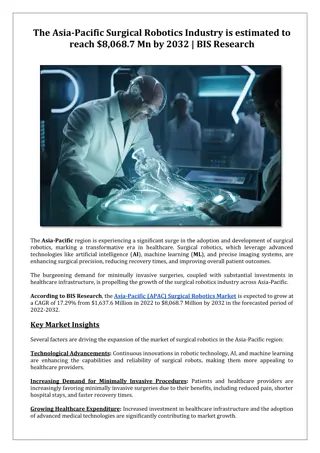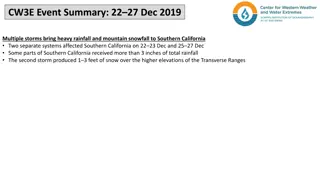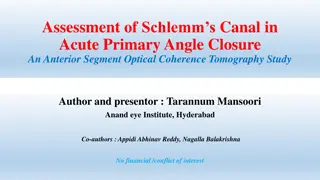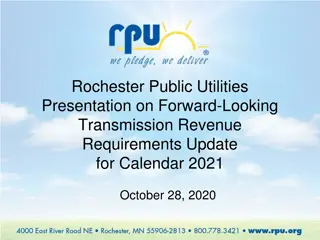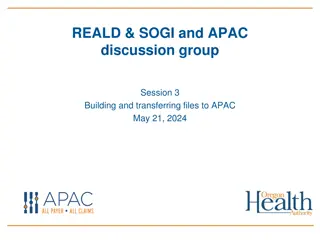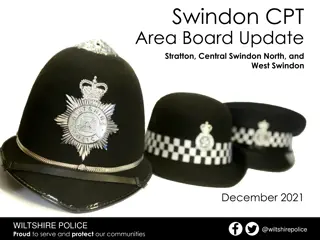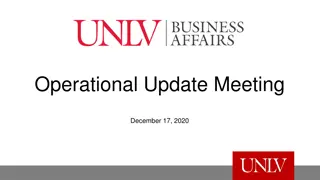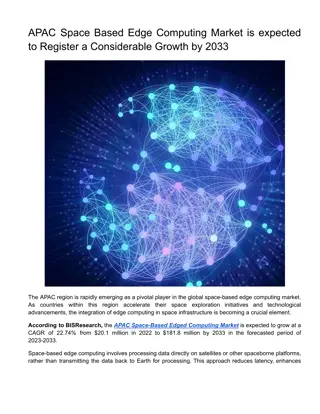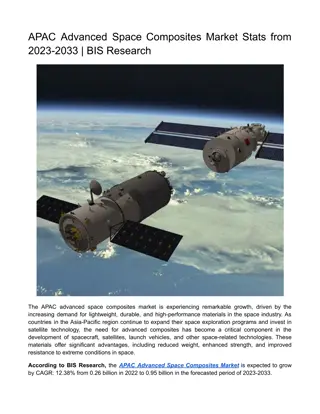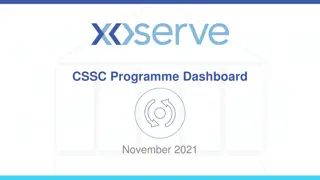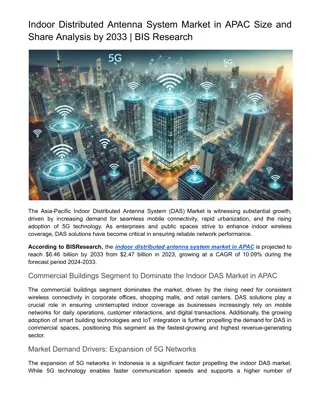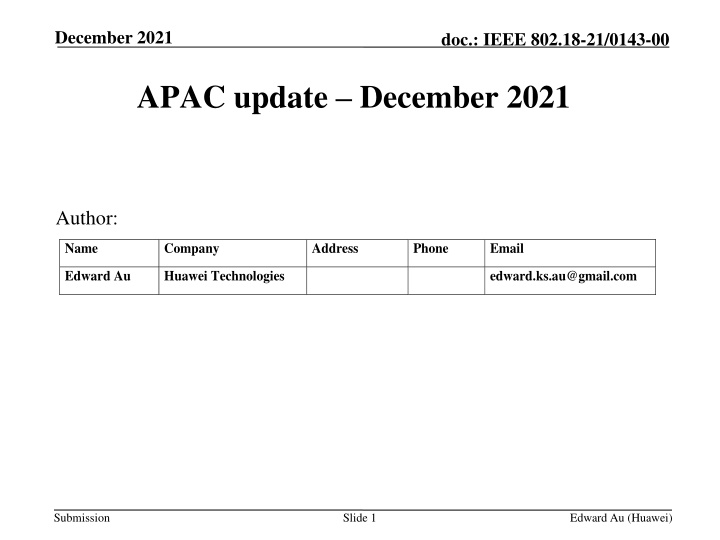
Overview of Recent Wi-Fi Developments in APAC - December 2021
This document highlights key updates and proposals in APAC related to Wi-Fi activities between November and December 2021. It covers the creation of a class license for 6 GHz devices in Hong Kong by HKCA, proposed EIRP limits, and considerations for the use of 6 GHz bands for future 5G services. Public opinions are sought on compulsory certification requirements to prevent interference with 5G services in Hong Kong.
Download Presentation

Please find below an Image/Link to download the presentation.
The content on the website is provided AS IS for your information and personal use only. It may not be sold, licensed, or shared on other websites without obtaining consent from the author. If you encounter any issues during the download, it is possible that the publisher has removed the file from their server.
You are allowed to download the files provided on this website for personal or commercial use, subject to the condition that they are used lawfully. All files are the property of their respective owners.
The content on the website is provided AS IS for your information and personal use only. It may not be sold, licensed, or shared on other websites without obtaining consent from the author.
E N D
Presentation Transcript
December 2021 doc.: IEEE 802.18-21/0143-00 APAC update December 2021 Author: Name Company Address Phone Email Edward Au Huawei Technologies edward.ks.au@gmail.com Submission Slide 1 Edward Au (Huawei)
December 2021 doc.: IEEE 802.18-21/0143-00 Background This slide deck provides a high-level overview of the activities in APAC (related to Wi-Fi and WPAN) between November 2021 and December 2021. Submission Slide 2 Edward Au (Huawei)
December 2021 doc.: IEEE 802.18-21/0143-00 Hong Kong HKCA (1) Creation of a Class Licence for Regulating the Use of and Trade in 6 GHz Devices for Wireless Local Area Network and Variation to the Class Licence for Provision of Public Wireless Local Area Network Services Consultation period: November 26 to December 24, 2021 https://www.coms- auth.hk/filemanager/en/content_711/cp20211126_e.pdf Submission Slide 3 Edward Au (Huawei)
December 2021 doc.: IEEE 802.18-21/0143-00 Hong Kong HKCA (2) Summary HKCA proposes the maximum EIRP of 24 dBm (250 mW) for indoor use; and 14 dBm (25 mW) for outdoor use. HKCA proposes to update its relevant specification HKCA 1081 by referencing ETSI EN 303 687. HKCA notes that some countries and regions designate the entire 6 GHz band for Wi-Fi. Wi-Fi devices from these countries and regions that could operate in the 6425 7125 MHz band, if illegally imported and used in Hong Kong, would cause in-band interference to the future 5G services . In view of this, the consultation seeks public opinions to impose compulsory certification requirements for APs to ensure that such devices to be used in Hong Kong should comply with the relevant specification (i.e. HKCA 1081), in particular that they do not operate in the 6425 7125 MHz band which may be used for 5G services in Hong Kong in the future. Submission Slide 4 Edward Au (Huawei)
December 2021 doc.: IEEE 802.18-21/0143-00 Hong Kong HKCA (3) Remarks HKCA s view on the potential use of 6 GHz bands (paragraphs 17 and 25): SSAC Members noted that such low power devices should not cause interference to the existing fixed-satellite service ( FSS ) (Earth-to- space) operating in the designated 6 GHz band and generally support the release of the band for use of WLAN devices in uncoordinated and unprotected manner in Hong Kong. As for the 6425 7125 MHz band, the CA will consider the use of this band, or parts thereof, for 5G services in Hong Kong subject to the outcome of WRC-23 and other considerations including co-existence with the incumbent services and frequency coordination with the neighbouring regions Submission Slide 5 Edward Au (Huawei)
December 2021 doc.: IEEE 802.18-21/0143-00 Hong Kong HKCA (4) Remarks (Cont d) HKCA emphasizes on the importance to control non-compliant devices (paragraphs 18 and 19): In this connection, Hong Kong has encountered similar interference problem due to the use of illegal DECT 6.0 cordless phones that users brought from overseas had caused interference to the public mobile services and OFCA has spent tremendous efforts to keep the situation under control. Although the US imposed requirements for the relevant access points of WLAN devices to be under control of an automated frequency coordination ( AFC ) system or a contention-based protocol so as to ensure protection to fixed services and facilitate sharing of spectrum among different devices/services, the effectiveness of such technical provisions to protect the future 5G services outside the US, particularly in Hong Kong, is still uncertain. The measures may include more stringent certification and labelling requirements to be imposed on the sale of Wi-Fi 6E devices in Hong Kong as compared with the conventional WLAN products working in the 2.4 GHz and 5 GHz bands. Slide 6 Submission Edward Au (Huawei)
December 2021 doc.: IEEE 802.18-21/0143-00 Indonesia MCIT RPM Public Consultation regarding the Table of Allocation of the Indonesian Radio Frequency Spectrum Consultation period: November 18 to November 27, 2021 https://www.kominfo.go.id/content/detail/38184/siaran-pers-no- 402hmkominfo112021-tentang-konsultasi-publik-rpm-mengenai- tabel-alokasi-spektrum-frekuensi-radio-indonesia/0/siaran_pers Summary The table of frequency allocation is updated as per the 2020 edition of Radio Regulations by ITU and the promulgation of Presidential Regulation No. 92 of 2021 concerning the Ratification of the Final Acts of WRC-19. Submission Slide 7 Edward Au (Huawei)
December 2021 doc.: IEEE 802.18-21/0143-00 Japan MIC (1) Announcement of the frequency reorganization action plan Released on November 15, 2021 https://www.soumu.go.jp/menu_news/s- news/01kiban09_02000421.html Of interest to us: MIC recommended to allocate 1 GHz for unlicensed uses by 2025. The frequency band under consideration is 6 GHz. MIC recommended that nearly 30 MHz spectrum is allocated for V2X by 2025. The frequency band under consideration is 5.9 GHz. MIC recommended to continue studying the possibility of allocating 7025 MHz to 7125 MHz band to 5G by referring to the studies of ITU-T and 3GPP. Submission Slide 8 Edward Au (Huawei)
December 2021 doc.: IEEE 802.18-21/0143-00 Japan MIC (2) Consultation on the technical conditions for the introduction of 5.2 GHz band in-vehicle wireless LAN Consultation period: November 17 to December 16, 2021 https://www.soumu.go.jp/menu_news/s- news/01kiban12_02000132.html Selected finding: Channel placement between 5150 MHz and 5250 MHz: 20 MHz width or less: 5180 MHz, 5200 MHz, 5220 MHz, 5240 MHz Over 20 MHz width and below 40 MHz width: 5190 MHz, 5230 MHz Over 40 MHz width and below 80 MHz width: 5210 MHz Usage conditions: Master station: Installed in a car. EIRP should be 40mW or less. Slave station: It shall be controlled and communicated by the master station installed in the car. Submission Slide 9 Edward Au (Huawei)
December 2021 doc.: IEEE 802.18-21/0143-00 Korea MSIT (1) Administrative notice (2021-0931) related to a partial revision of table of frequency allocation Consultation period: November 17, 2021 to January 16, 2022 https://www.msit.go.kr/bbs/view.do?sCode=user&mId=109&mPid= 103&pageIndex=&bbsSeqNo=84&nttSeqNo=3179348&searchOpt= ALL&searchTxt= Summary There is an increasing use of the 76 81 GHz frequency band for object detection sensors in various application fields, such as collecting biometric information. The proposed change is to enable radar devices to operate in the 70 GHz band by updating the domestic note K40A that allows the 76 to 81 GHz frequency band to be used for object detection. Submission Slide 10 Edward Au (Huawei)
December 2021 doc.: IEEE 802.18-21/0143-00 Korea MSIT (2) Administrative notice (2021-0933) related to a partial revision of technical standards Consultation period: November 17, 2021 to January 16, 2022 https://www.msit.go.kr/bbs/view.do?sCode=user&mId=109&mPid= 103&pageIndex=&bbsSeqNo=84&nttSeqNo=3179352&searchOpt= ALL&searchTxt= Summary It is related to the administrative notice 2021-0931 with proposed technical requirements as shown in the next page. Submission Slide 11 Edward Au (Huawei)
December 2021 doc.: IEEE 802.18-21/0143-00 Korea MSIT (3) Administrative notice (2021-0933) related to a partial revision of technical standards Selected proposed technical requirements Peak power: 100mW or less (including antenna absolute gain) Average power density is -16 dBm / MHz Spurious emission limit: Less than 1 GHz: -36 dBm with reference bandwdith of 100 kHz 1 GHz or larger: -30 dBm with reference bandwidth of 1 MHz It is prohibited to use in moving objects such as automobiles, aircraft, ships, railways. This device is intended for use in buildings. If it is installed within a radius of 2 km from the radio astronomical antenna, prior consultation with the observatory is required. Submission Slide 12 Edward Au (Huawei)
December 2021 doc.: IEEE 802.18-21/0143-00 New Zealand RSM (1) Draft five year spectrum outlook 2022-2026 Consultation period: November 29, 2021 to February 28, 2022 https://www.rsm.govt.nz/projects-and-auctions/consultations/five- year-spectrum-outlook-2022-2026/ 3 main questions RSM ask for opinions: Have we identified the range of technological advancements and probable new demands relevant to New Zealand? Have we prioritised the right issues that we will need to actively manage through our work programme (to the extent this is possible to predict now)? Are there other matters that we should cover? Submission Slide 13 Edward Au (Huawei)
December 2021 doc.: IEEE 802.18-21/0143-00 New Zealand RSM (2) Draft five year spectrum outlook 2022-2026 Of interest to us: 4 main technological areas and the corresponding priorities on spectrum are presented: Satellites Cellular mobile 5G Page 15: RSM will continue to proactively engage in ITU, APT and international trade matters relating to spectrum including monitoring and responding to developments in the 6.425 7.125 GHz band for mobile and Wi-Fi. IoT / M2M Page 16: The standardisation of wireless technology is creating a trend of convergence around wireless 3GPP and IEEE standardised technologies to replace proprietary technologies and land mobile systems in some sectors. Private networks Submission Slide 14 Edward Au (Huawei)
December 2021 doc.: IEEE 802.18-21/0143-00 New Zealand RSM (2) Draft five year spectrum outlook 2022-2026 Of interest to us (Cont d #2) Spectrum sharing Page 22: We will continue to monitor the demand for different tools and levers to allow more innovative approaches to spectrum sharing. Consider sharing models when developing future spectrum bands is one of the RSM s planned work plan priorities User of higher frequencies Page 22: This includes the frequency ranges recently identified for mmWave 5G in the 26 GHz, 40 GHz and 66-71 GHz bands Page 22: There is growing interest in the use of even higher frequency ranges (eg above 100 GHz) with the latest technological advancements. Monitor use of multigigabit wireless systems in the 66-71 GHz range is one of the RSM s planned work plan priorities Submission Slide 15 Edward Au (Huawei)
December 2021 doc.: IEEE 802.18-21/0143-00 New Zealand RSM (2) Draft five year spectrum outlook 2022-2026 Of interest to us (Cont d #3) Licensing approaches enabling new technologies Consider updates to General User Licences, particularly for short-range devices and monitor developments in the use of 6 GHz for Wi-Fi 6E is one of the RSM s planned work plan priorities Consider a General User Licencing regime when developing higher frequency bands is another RSM s planned work plan priority in this category. Submission Slide 16 Edward Au (Huawei)


